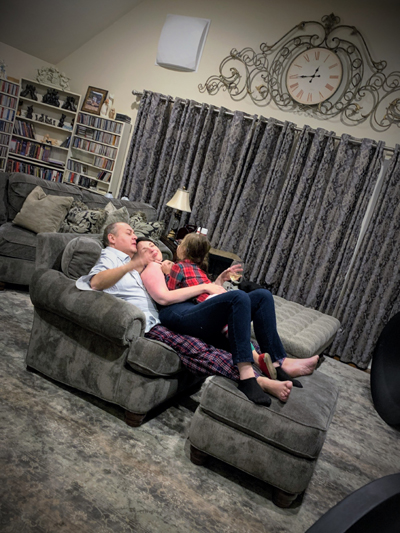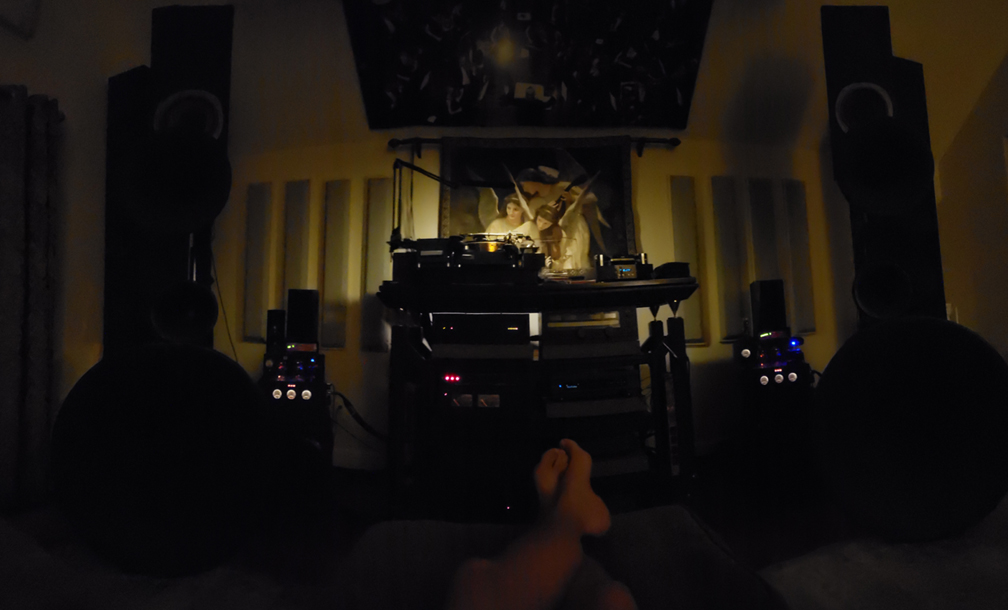|
Posted by Romy the Cat on
10-26-2019
|
It has been a difficult time last 2 months in my family. We went
over job change and we fired a live-in nanny that made some logical thine with
kids difficult. The new nanny we found had to quit in 2 weeks due to her
medical condition, so it was another round of worries and organization disorder…
as a result I did not listen my main playback for good 2 months. I listen mostly
at my work, in headphone, which is fine but no high-end for all intended purpose.
Yesterday I felt that I miss it, warmed up the main system and
had a nice listening session. I was quite impressed with the system capacity. I
started by streaming from YouTube the Dudamel with his Bolivar Symphony
Orchestra playing the resurrection at BBC Proms 2011. It was nice play with pretty
musicians and good cinematography. It was not bad reading of Mahler as well.
Then I streamed form YouTube the Brahms Second with Carlos Kleiber and Vienna from 1991. I know this performance
by hart and again and again I find myself to be sorry that I am not a gay. If
watching Kleiber you do not want to make love to him them you are certifiably
dead. Then them I played something that
make Macondo to shine like a crazy diamond.
I have a Zander and BPO box set and I decided to play a Bruckner
8 from there. It was recorded in NE philharmonic and Amy was playing the performance.
I hear it a few times over my headphones and it is OK performance, not the best
I hear but a nice and solid reading. This time playing the recording at the main system
where Macondo-Milq took over and it was exactly what ultra-high capacity high-end
system should do: it showed something that plain audio could not. The difference
was not in the way how it sound but how it made me to understand what I heard.
The sound was fine it was not about sound but rather rendering the performing
intentions. It was like interviewing Mr. Zander and interviewing his musicians,
or rather like reading their dairies and reading who they are. They whole play
was a very dramatic and to extend a very tragic fight between the magnitudes of
the people who play this music and the magnitude of the music itself. It was tragic
because the BPO and Zander were not where they had to be and they did try very
hard… The stunning were Macondo and Milq which where so damn transparent in reflecting
that magnitude! I never heard before a playback that can reflect musicians’ hesitance,
fear of contractor to go into vulnerably zone, performers instrumental impotence,
fear of fatefulness and many other quiets that were scramming out of speakers.
The level of introspective expressiveness was truly stunning and I felt that I
was not listening music but rather participated in a group psychology session
and hear confections of 114 musicians and one contractor.

I stopped the play at the end of the Adagio, wify and Abby came to then room and decided
to sit on me. I love them but I prefer to listen my music alone. The end of
that session was my feeling of great satisfaction about Macondo and Milq. I begin
to question where the boundaries of the Macondo/Milq interruptive capacity are.
Not necessary where they are but what would be a methodologically proper way to
test it. What would be a mechanism to stress Macondo/Milq in ordered them to bring
own permanent interpretation (or what I call coloration) in these confessions. It
is hard question…
|
|
|
|
Posted by rowuk on
10-27-2019
|
I think if we want to test for expressiveness, we need to quantify our expectations before we hear the first note. After several day/weeks of abstinence, our view and passion about drink, cigar, sex or intimate music very much changes.
An old english (1832) saying is: "'Tis absense, however, that makes the heart grow fonder". An older take: Sextus Propertius (from around Christs time on earth) says in his Elegies:
"Always toward absent lovers love's tide stronger flows."
|
|
|
|
Posted by anthony on
10-27-2019
|
...rather than something more culturally appropriate...
"it's the bubbles of nothing that make it really something"
Macondo + Melq, at least in my room unfinished and still mono, plays the silences between the notes so wonderfully. The notes themselves are fine, tone is correct, dynamics ever-present, bandwidth appears unlimited.
Several years ago I heard a highly modified vintage Leak Stereo 20 push-pull amplifier do a similar thing where it seemed to have all the time in the world to make the sounds and play the music. We had just listened to some big Gryphon Class A beasts, high power valve input stage Class D Arions, some high powered KT88 based valve amps and then this diminutive in size and output power 12W Leak. Sure, it was trimmed in the bass, and it was using all of it's measley 12w to power those speakers, but it did something that none of the other amplifiers could do, and that was articulate what was in-between the notes, play the silence, resolve what the other amplifiers could not. For me, it was addictive.
Melq is the first amp since then that I have heard that is able to do a similar thing, but it does more. I have not really grasped just what it is that allows such an intimate conection with the performance. For me, certainly, the silence between notes is a large part of the effect, the almost hyper-resolution for want of a better description, moist and dry at the same time, almost like being allowed to wander about on stage while the performance is happening, concentrating on one aspect of the performance, then another musician, then the entire ensemble...at will.
Whatever it is, I am still coming to terms with it.
|
|
|
|
Posted by Romy the Cat on
11-06-2019
|
Might be ended I did not listen it for a while but it is
very nice, better then I remember and in a way it is better than it should be…
Just out of blue sit today and was listening a few RR albums. Say whatever you
want about Minnesota orchestra but it is ...great audio….

|
|